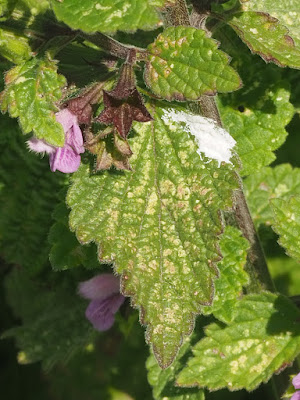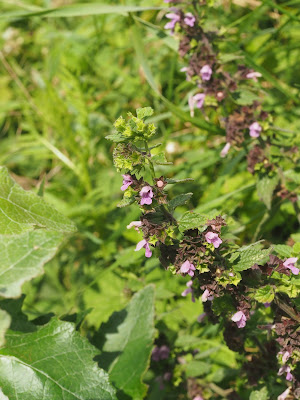Common name: Black Horehound
Scientific name: Ballota nigra 寬萼蘇、黑夏至草、黑苦薄荷
Genus: Ballota 寬萼蘇屬
Family: Lamiaceae or Labiatae 唇形科, mint or deadnettle or sage family
Remarks:
Origin: Archaeophyte (established before 1500 AD). It has a European Southern-temperate distribution. Archaeological evidence suggests that it is an ancient introduction, having been associated with human settlements since the Iron Age.
Date: 28th July
555 An erect, branched, pubescent perennial, can reach up to 100cm, with unpleasant smell.
546
546_1 Leaf stalked (see the small leaves above), leaf oval-lanceolate to heart-shaped, blade 2-5cm, with crenate or dentate margin. Upper surface of leaf wrinkled.
553 Opposite leaves. Underside of the leaf pubescent (both sides of leaves are pubescent) and also showing the leaf stalk (1-3cm). Note the hairy and square stem.
554 Flowers in many-flowered inflorescence with numerous whorls.

545_1 Flowers are organized in verticillasters (輪狀聚傘花序), subspherical to about one-sided, with 15 to 30 flowers. Each verticillaster consist of two condensed dichasial cymes (二岐聚傘花序) at axils of normal leaves. Note the brown calyx funnel-shaped, with 5 broad, more or less equal teeth.
547
548

547_3 Flower bud. Note the brown calyx funnel-shaped, with 5 broad, more or less equal teeth.

547_2 Corolla reddish manuve.

547_1 Flower with 2 lips. The upper one is slightly concave, like a hood, and hairy externally. The lower one is glabrous, with 2 minor lateral lobes and a major central bifid lobe.

















No comments:
Post a Comment